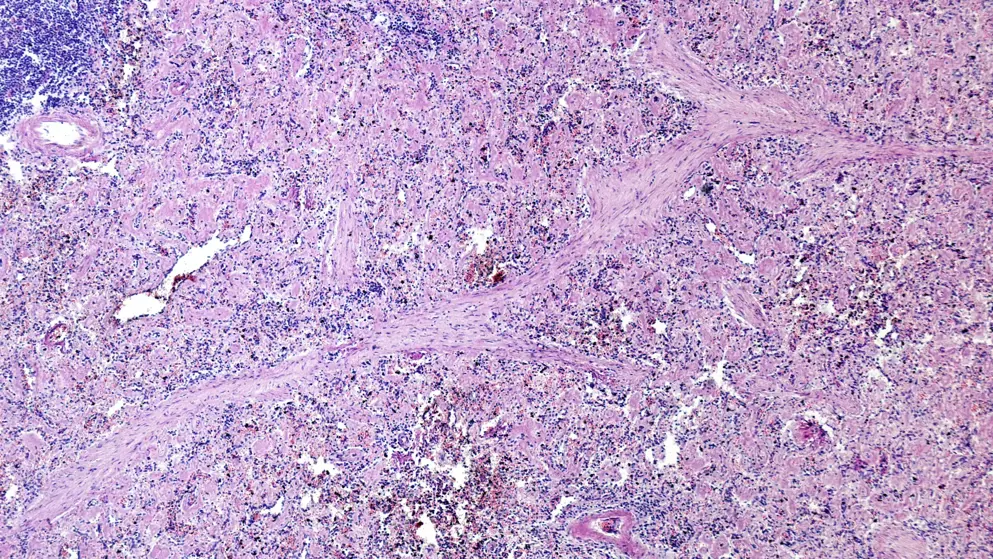
AL amyloidosis
AL amyloidosis: From empirical treatments to evidence-based medicine
Managing patients with systemic light chain (AL) amyloidosis is a clinical challenge. In this disease, the root clone causes rapidly advancing, debilitating multiorgan dysfunction through toxic light chains, which form amyloid deposits1-3. Signs and symptoms of AL amyloidosis can be hard to recognise in the clinic and are often detected at an irreversible stage4.
Despite these challenges, clinicians are uniquely positioned to diagnose AL amyloidosis at a pre-symptomatic stage, assessing biomarkers of amyloid organ involvement in high-risk patients5. Suitable technology and know-how are required for an early and accurate diagnosis; this is critical for excluding treatable non-AL amyloidoses6.
Best-practice treatment for AL amyloidosis is personalised and multidisciplinary, based on the severity of organ involvement and clonal features. Regular monitoring of patient response to treatment is important5,6.
Three pivotal randomised clinical trials have propelled AL amyloidosis into evidence-based medicine7-9. Daratumumab–bortezomib combination therapy is standard of care for newly diagnosed patients with AL amyloidosis and translates into high rates of organ response9.
The approval of effective medications for AL amyloidosis can enhance personalised therapy, reduce toxicity and improve patient outcomes2,5.
View clinical resources on hereditary transthyretin amyloidosis (hATTR), a rare amyloidosis due to mutations in the gene encoding transthyretin (TTR) here.
Independent, grant-supported education for AL amyloidosis
of interest
are looking at
saved
next event
References
- Merlini G, Dispenzieri A, Sanchorawala V, Schönland SO, Palladini G, Hawkins PN, et al. Systemic immunoglobulin light chain amyloidosis. Nat Rev Dis Prim. 2018;4(1):38.
- Palladini G, Milani P, Merlini G. Management of AL amyloidosis in 2020. Blood. 2020;136(23):2620–2627.
- Shi J, Guan J, Jiang B, Brenner DA, Del Monte F, Ward JE, et al. Amyloidogenic light chains induce cardiomyocyte contractile dysfunction and apoptosis via a non-canonical p38α MAPK pathway. Pro Nat Acad Sci. 2010;107(9):4188–4193.
- D'Souza A, Osman K, Chase CC, Borham A, Bruno M. The hematologist's role in amyloidosis management: disease awareness, diagnostic workup, and practice patterns. Blood. 2020;136:28–29.
- Palladini G, Merlini G. How I treat AL amyloidosis. Blood. 2022;139(19):2918–2930.
- Merlini G, Seldin DC, Gertz MA. Amyloidosis: pathogenesis and new therapeutic options. J Clin Oncol. 2011;29(14):1924.
- Kastritis E, Leleu X, Arnulf B, Zamagni E, Cibeira MT, Kwok F, et al. Bortezomib, melphalan, and dexamethasone for light-chain amyloidosis. J Clin Oncol. 2020;38(28):3252–3260.
- Dispenzieri A, Kastritis E, Wechalekar AD, Schönland SO, Kim K, Sanchorawala V, et al. A randomized phase 3 study of ixazomib-dexamethasone versus physician’s choice in relapsed or refractory AL amyloidosis. Leukemia. 2022;36(1):225–235.
- Kastritis E, Palladini G, Minnema MC, Wechalekar AD, Jaccard A, Lee HC, et al. Daratumumab-based treatment for immunoglobulin light-chain amyloidosis. New Eng J Med. 2021;385(1):46–58.


